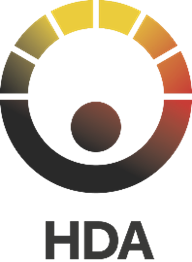A brief overview of some terms relating to data and health
Browse the glossary using this index
Special | A | B | C | D | E | F | G | H | I | J | K | L | M | N | O | P | Q | R | S | T | U | V | W | X | Y | Z | ALL
( |
|---|
A |
|---|
AnonymizationData can be considered as anonymous or anonymized, if it is not possible to “single-out” individuals with the data provided and when the applied mechanisms to anonymise are irreversible.
Anonymous data is not identifiable data from the start, while anonymized data is data initially identifiable but for which a process has been put in place to make it not identifiable anymore (GDRP: art. 4(5)). | |
B |
|---|
Big dataBig Data refers to really large amounts of information—so much that it’s too big and complex for regular computers or tools to handle easily. The idea of Big Data isn’t just about the size, though—it’s about what we can do with it. By analyzing this data, we can:
Find patterns: For example, spotting trends in shopping habits or traffic flows.
Make predictions: Like forecasting the weather or predicting what products someone might buy.
Solve problems: Such as improving healthcare by analyzing medical data or optimizing city planning by studying population data.
In short, Big Data processing helps us make sense of the huge amounts of information being created every second and turn it into useful insights. | |
C |
|---|
Clinical trialA clinical trial is a type of research that tests whether a new medicine, treatment, or medical approach is safe and works well for people. It’s like a carefully controlled experiment with real patients to find better ways to treat or prevent diseases. Clinical trials help discover better ways to treat diseases and improve healthcare. | |
D |
|---|
DataData can also be described as measurements or values that, when processed, yield information. The term digital data, in turn, refers to those data that are stored or processed by digital means. The collection and analysis of data enable personalized services, predictive analytics and improved outcomes. As the volume of data generated continues to grow, its importance in shaping policies, enhancing business operations and fostering technological advancements becomes ever more critical. | |
Data aggregationData aggregation is when you take a lot of small pieces of information and combine them into a bigger summary. It’s like collecting puzzle pieces and putting them together to see the bigger picture.
For example: If you collect data about daily temperatures from different cities, you can aggregate it to find the average temperature for the whole country.
Instead of looking at every single detail, you can focus on the overall trends or patterns. it alse saves time: It’s easier to analyze summarized data than thousands of individual points.
In short, data aggregation turns lots of small pieces of data into something more useful and easy to understand. | |
Data altruismData altruism is defined as ‘individual people and companies can voluntarily make data available for the common good'. It is focusing on the safe reuse of public-sector data and establishing a level playing field in the data economy by promoting data sharing and reducing barriers to data accessibility. | |
Data collectionData collection is the process of gathering information so you can use it to learn something, make decisions, or solve problems. The goal of data collection is to gather accurate and relevant information that can be used for analysis, decision-making, or improvement.
It can be done in many ways: surveys or interviews; observing and recording behaviors; sensors, like weather monitors or traffic cameras.
In short, data collection is just about gathering the facts you need to answer a question or achieve a goal. | |
Data controllerA data controller is a person, organization, or entity that determines the purpose and means of processing personal data. The data controller has the responsibility for ensuring that personal data is handled in compliance with data protection laws. It is the person who decides why and how personal data will be processed. | |
Data cultureData culture is about how people in an organization or community value and use data in their everyday work and decision-making. Building a data culture isn’t just about having the right tools or technology—it’s about encouraging people to trust and use data as a natural part of how they work. In healthcare, it might mean using patient data to improve treatments and outcomes. | |
